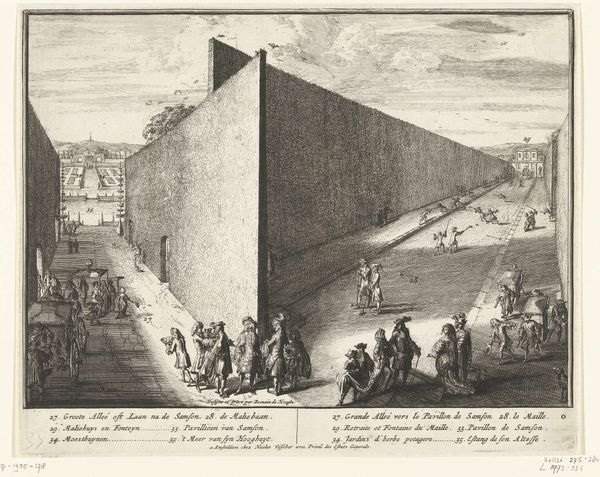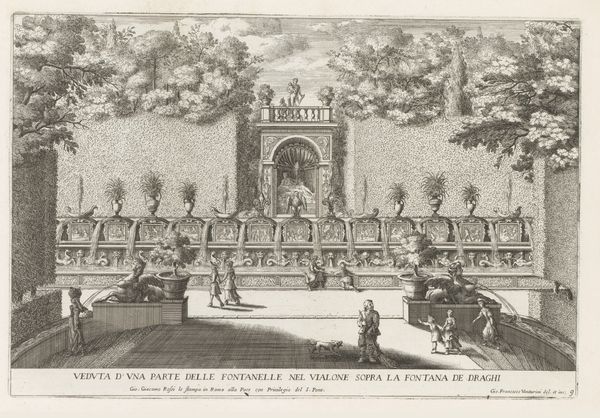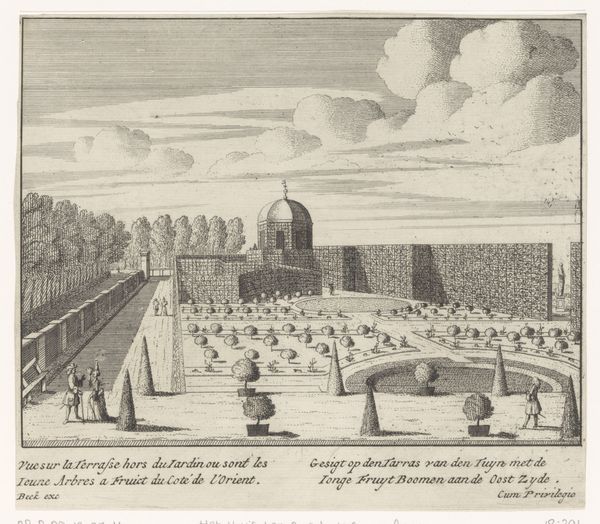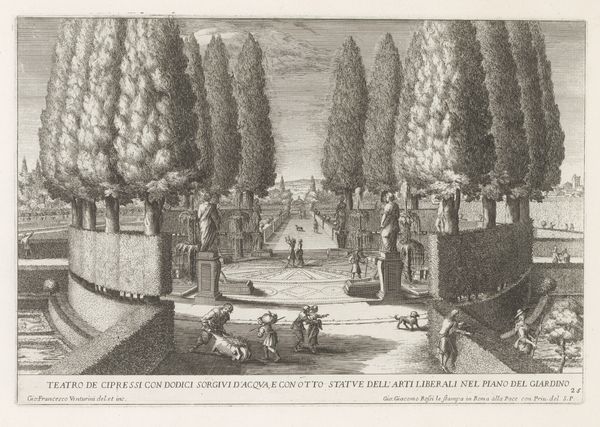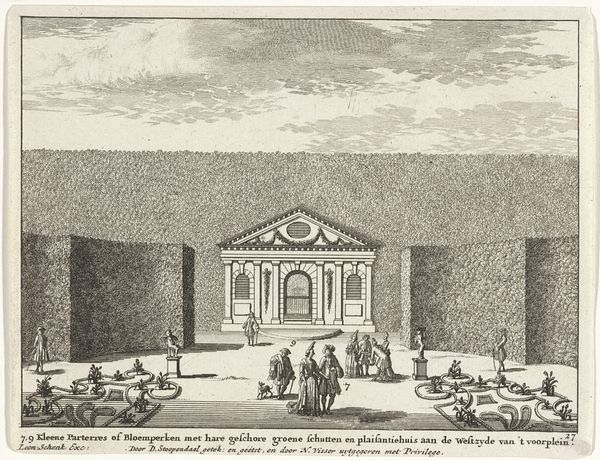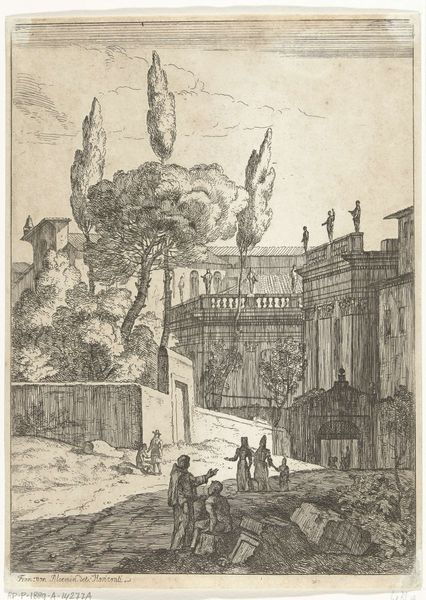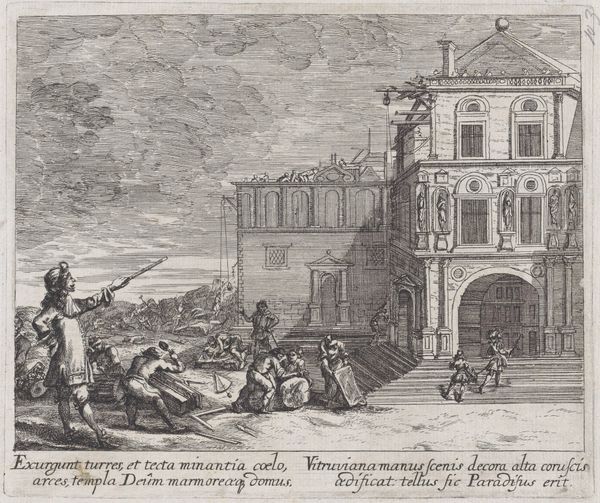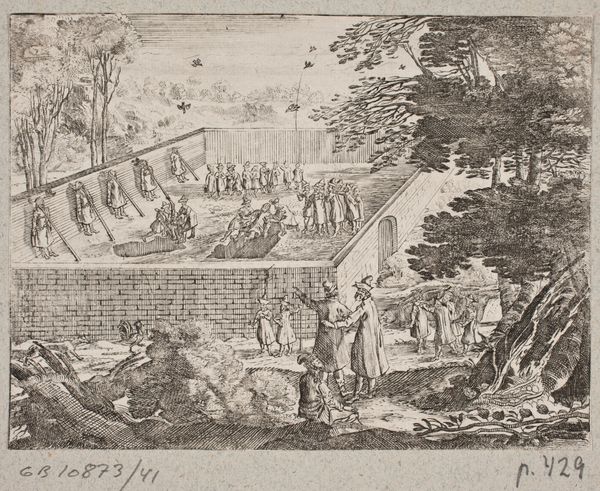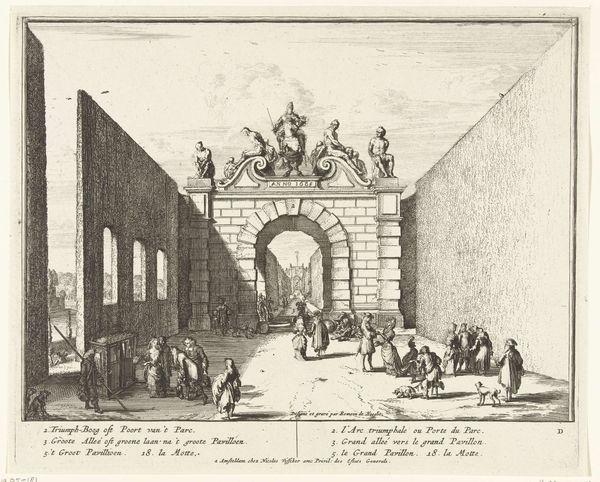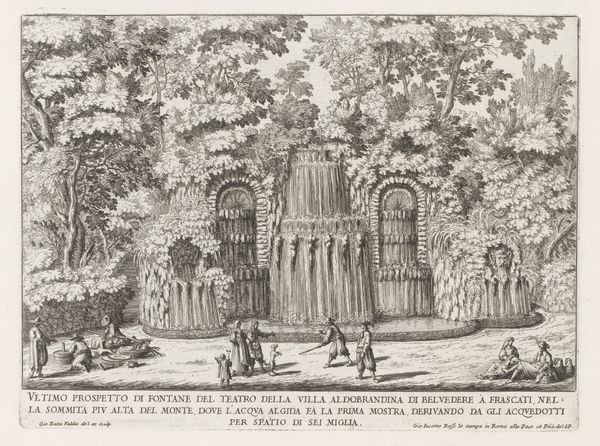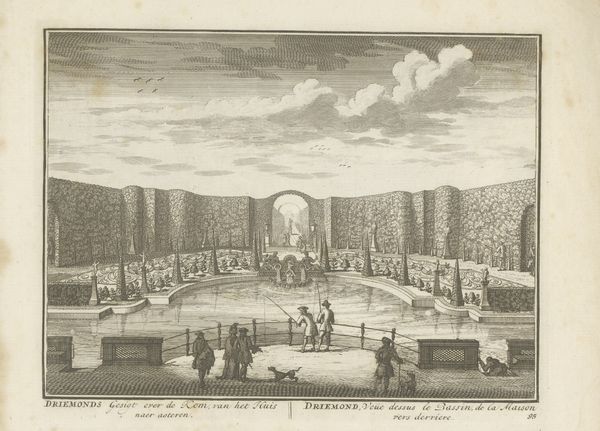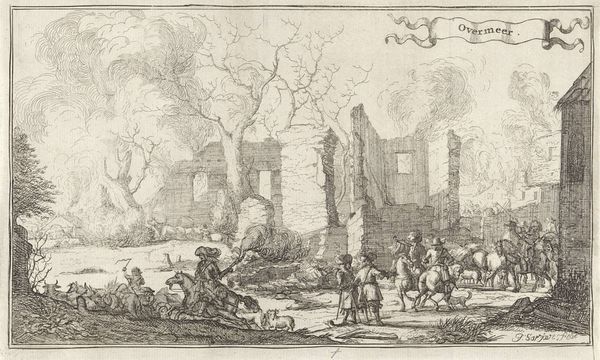
Fontein met triton in de tuinen van de Villa Celimontana te Rome 1653 - 1691
0:00
0:00
print, engraving
#
baroque
# print
#
landscape
#
cityscape
#
engraving
Dimensions: height 208 mm, width 290 mm
Copyright: Rijks Museum: Open Domain
This engraving by Giovanni Francesco Venturini captures the Triton Fountain in the Villa Celimontana gardens, circa 1700. Dominating the scene is Triton, a Greco-Roman sea deity, blowing a conch shell, a symbol of his power over the waters and a heraldic call. This motif, though rooted in antiquity, echoes through the ages. We see it in Renaissance fountains and Baroque sculptures, each iteration adapting to its time. The conch shell, initially a simple instrument, becomes a symbol of triumph and dominion, its call resonating with the collective memory of maritime power. Consider, too, the psychological weight of water itself—a primal source of life and an emblem of the subconscious. The fountain, with its constant flow, suggests the ceaseless movement of time and the ever-changing nature of existence. Venturini's work, therefore, is more than a mere depiction; it's an embodiment of enduring symbols, each laden with layers of history and psychological resonance, constantly resurfacing in our cultural consciousness.
Comments
No comments
Be the first to comment and join the conversation on the ultimate creative platform.
